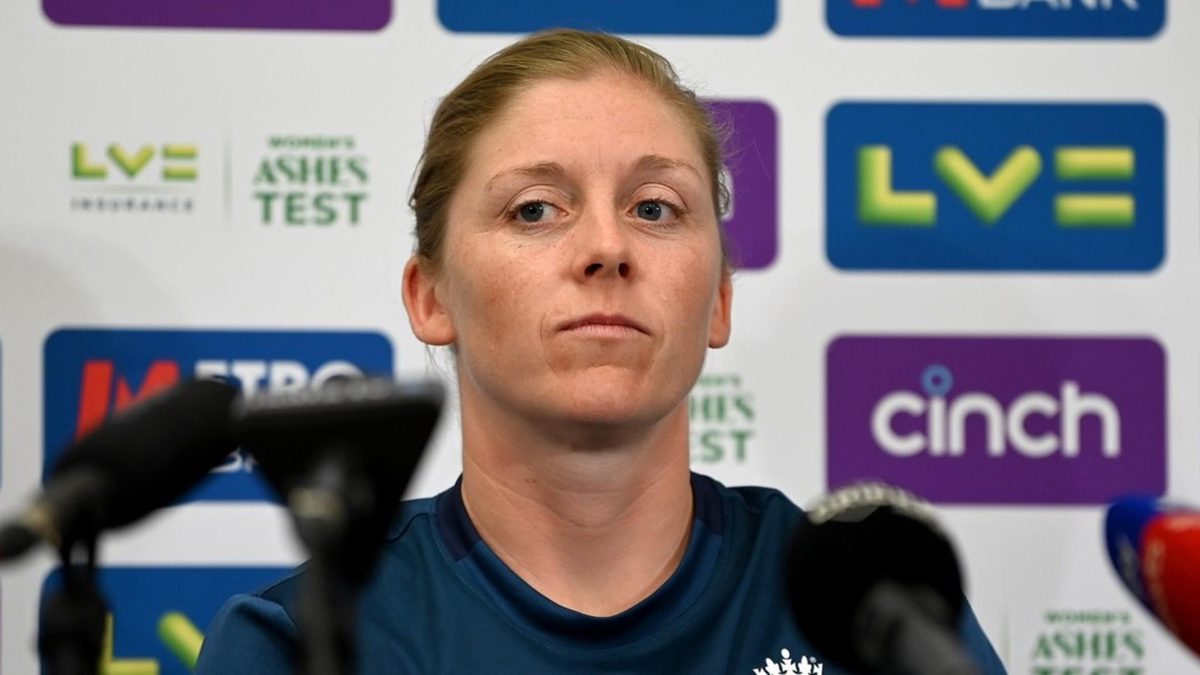
Subscribe to the Wisden Cricket YouTube channel for post-match analysis, player interviews, and much more.
England captain Heather Knight expressed her opinion after India trounced England by a record 347 runs in the Navi Mumbai Test match,
Playing their first Test match on home soil after nine years, India beat England by 347 runs – a world record margin of victory in terms of runs – in seven sessions.
The Indian spinners – Deepti Sharma (9-39 in the match), Sneh Rana (2-44), and Rajeshwari Gayakwad (2-45) shared 13 wickets. Across the three T20Is last week, the home spinners – including debutants Saika Ishaque and Shreyanka Patil – had claimed 12 wickets at 17.91 while conceding 7.58 an over.
India had raced to 410-7 – the second-most in a day’s play in history – on day one, and scored at 4.09 an over for their first-innings total of 428. For England, Sophie Ecclestone, the top-ranked spinner in the world in both ODIs and T20Is, had a rare bad day at work.
The Indian spinners found turn thereafter, and England lasted only 63 overs across innings.
At the post-match press conference, England captain Heather Knight expressed her opinion about the DY Patil Cricket Academy pitch. “These conditions were really extreme: we have never seen that sort of spin before, that sort of dryness in the pitch. In the main formats we play – T20 and 50 overs – we are not going to get as much [turn] as that.”
One can see Knight’s point. This was England’s first Test match in Asia since 2004/05. In fact, since the start of 2010, they have played only 12 Test matches – fewer than one a year – along with 149 ODIs and 174 T20Is. So rare are Test matches that the ICC does not maintain a ranking. In the absence of red-ball cricket at any level, it is perhaps unfair to expect touring batters to adjust to the turn on Indian pitches.
“Previously our issues against spin have been … the ball not spinning. You’d look at the wickets Ash Gardner took in the Ashes, there weren’t many that spun. My dismissal that spun but a lot was outside edge and balls that didn’t spin,” Knight added.
“These conditions were extreme, and I’d be surprised if we face those again unless we play another Test in India in the near future, which I am not sure is in the plan. We want to get better in conditions we might face in Bangladesh. Spin does dominate in the women’s game, and if we can improve that it will give us a big advantage.”
Knight admitted that the pitch “probably deteriorated a bit faster than we expected”, and that it had been “reasonably good in the first innings to bat on. The spin was quite extreme.” Debutant Shubha Satheesh, who had made 69 on debut, had voiced a similar opinion on the first day’s surface.
“We identified that the wobble ball was really effective and tried to get as much out of that as we can,” added Knight. “It seamed a little bit more because the pitch deteriorated and when it spins it does seam a little bit as well.”
Knight also explained the performance of Ecclestone, who, despite not being at her best, claimed five of the 16 Indian wickets to fall: “Sophie is coming back from a surgery and the expectation on her is so high. She is so brilliant, she is the best spinner in the world. The expectation from our side and also from herself – she puts a lot of expectation on herself – which is why she is so good. It was hard for her.
“When she was bowling to the right-handers, she was bowling on the best part of the pitch that hadn’t had a lot of traffic on. The threat was more to the left-arm spinners to the left-handers, which she bowled very well to.”








